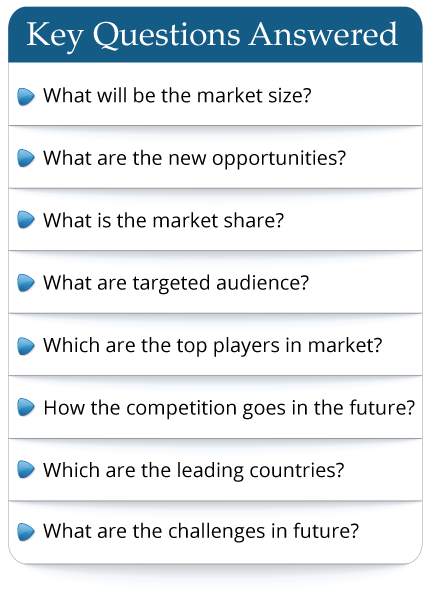IOT PANIC BUTTON MARKET OVERVIEW
The global IoT panic button market size was valued approximately USD 2.85 Billion in 2025 and will touch USD 6.34 Billion by 2034, growing at a compound annual growth rate (CAGR) of 8.50% from 2025 to 2034.
An IoT Panic Button is a high-tech gadget for safety. It sends instant alerts and location info when in trouble, using the internet. Unlike old-school panic buttons, these link up online and warn smartphones, security, or police via radio waves. They're handy in personal attacks, health emergencies, or workplace mishaps. IoT panic buttons are loved for being portable, easy to set up, and working well with other gadgets, boosting overall safety. With more people worried about safety and smart tech on the rise, IoT panic buttons are flying off the shelves in homes, businesses, and factories.
IMPACT OF KEY GLOBAL EVENTS
“Impact of Global Economic Uncertainty on the IoT Panic Button Market”
The IoT Panic Button market faces hurdles due to global economic woes, like inflation, price swings, and financial turmoil. This makes it tough for buyers and firms to spend on safety gadgets. Yet, economic unrest in some places has heightened security fears, boosting demand for dependable, quick-to-use solutions. In crime-ridden or politically unstable areas, IoT panic buttons are vital for personal and work safety. Though economic struggles may crimp budgets, they also push for budget-friendly, top-notch security products like IoT panic buttons.
LATEST TREND
”The Rise of AI Integration in IoT Panic Button Systems”
In the IoT Panic Button market, the latest trend is blending Artificial Intelligence (AI) with panic systems. AI is transforming security by offering predictive alerts, automated responses, and better situation awareness. With AI, IoT panic buttons can crunch data quickly, foresee risks, and instantly alert authorities or contacts based on set patterns or threats. This mix boosts panic systems' efficiency and reliability, speeding up responses and cutting down human mistakes. As AI grows, its role in personal and business security will soar, making IoT panic buttons even stronger and cementing their spot as key tools in modern safety plans.
IOT PANIC BUTTON MARKET SEGMENTATION
By Type
Based on Type, the global market can be categorized into LoRaWAN-based and Zigbee-based IoT Panic Buttons.
- LoRaWAN-based IoT Panic Buttons: These panic buttons use LoRaWAN technology, which lets them communicate over long distances while using little power. They're perfect for big places or outdoors where other wireless tech may fall short. The market for LoRaWAN devices is expanding, especially in farming, manufacturing, and large company sites that need wide coverage. The tech's long-range, low-energy feature gives it an edge in these settings.
- Zigbee-based IoT Panic Buttons: Zigbee panic buttons are for close-range, low-power chatting, often indoors like offices, hotels, and homes. Zigbee uses little energy and works well in crowded places, making it great for quick, solid alerts in cities. Its market is booming in hospitality and healthcare, where fast emergency calls are vital, and gadgets talking to each other is a plus. Zigbee's fame keeps rising because it's already big in smart homes and building controls.
By Application
Based on Application, the global market can be categorized into Hotels, Motels, Casinos, Education, and Healthcare.
- Hotels: In hotels, IoT panic buttons offer extra safety for guests and staff. These buttons hook up to the hotel's security, making sure help comes fast. Hotels are more focused on guest safety, boosting the need for these buttons. As hotels get smarter, the market for them will likely grow, especially in top-notch hotels with personal touches and solid safety.
- Motels: Motels, much like hotels, are adding IoT panic buttons to their security setups. Since motels often have less security than bigger hotels, these buttons are crucial for quick help in emergencies, boosting guest safety. The motel market is steadily rising, fueled by the need for budget-friendly security in smaller places.
- Casinos: Casinos rely heavily on IoT panic buttons for staff and customers, providing a swift way to call security in emergencies. Casinos are risky places with lots of people and money, so quick communication is key. The market for these buttons in casinos is growing as owners boost security and follow rules, especially in tough-on-security areas.
- Education: Educational places are using IoT panic buttons more to keep students, staff, and guests safe. These buttons link up with campus security to send fast alerts in emergencies, like health issues or security risks. The market for these buttons in schools, colleges, and universities is growing, thanks to rising safety worries and schools buying smart campus gadgets.
- Healthcare: The healthcare world, especially hospitals and clinics, loves IoT panic buttons. They quickly tell medical staff about emergencies, like patient problems or security issues. As patient and staff safety get more attention, healthcare places are using these buttons more to speed up help. The healthcare market for these buttons will keep growing, thanks to IoT tech advances and the need for total safety plans.
MARKET DYNAMICS
Market dynamics include driving and restraining factors, opportunities and challenges stating the market conditions.
Driving Factors
”Increasing Demand for Safety and Security Solutions”
Global safety worries are boosting the IoT panic button market. More security risks in sectors like healthcare, schools, and hotels are making businesses upgrade to better emergency alerts. IoT panic buttons send signals fast, helping security teams respond quicker. Smart buildings and environments also want these buttons. As homes, offices, and hospitals get smarter, IoT panic buttons protect people and property. Plus, governments are making high-risk places like casinos and hospitals safer, pushing up the demand for IoT panic buttons and growing the market.
Restraining Factor
”High Implementation and Maintenance Costs”
Even though IoT panic buttons have many benefits, their high costs stop many from using them. Setting up these systems needs lots of money for hardware, software, and networks. Small businesses in developing areas might not be able to afford this. Keeping these systems running also costs a lot, with experts needed for updates, checks, and fixing problems. These high costs can be a big hurdle, especially for businesses with tight budgets, like small hotels or local schools. So, while big companies and governments might see the value, smaller businesses might think twice, slowing down how fast these buttons spread in the market.
Opportunity
”Growth in Smart Buildings and IoT Integration”
Smart buildings and IoT tech are opening up big chances for the IoT panic button market. Cities are becoming more connected and automated, so reliable emergency solutions are in demand. IoT panic buttons work well in these smart spaces, linking up with security cameras, access controls, and alarms. Smart home gadgets are also making the panic button market grow, as people want all-in-one safety solutions. Offices and commercial buildings are also using IoT tech, wanting panic buttons linked to central alerts. This mix of smart building tech and safety tools is a huge market growth opportunity.
Challenge
”Cybersecurity Threats and Vulnerabilities”
The IoT panic button market faces a big challenge: cybersecurity risks. Because these buttons need the internet, they can be hacked, have data stolen, or face other cyberattacks. In sensitive sectors like healthcare and finance, any weakness could mean less security and slower responses in emergencies. Unauthorized access could lead to false alarms, misuse, or even no alerts to responders. To stay safe, IoT panic buttons need strong encryption, constant watching, and regular updates. Fixing these security issues is key to gaining user trust and growing the market.
IOT PANIC BUTTON MARKET REGIONAL INSIGHTS
-
North America
North America stands tall as a leader in the IoT panic button market, thanks to its top-notch technology and strict safety laws. The US is seeing a surge in smart home tech and IoT security solutions, boosting the market. Healthcare, education, and hospitality are all integrating IoT panic buttons into their safety plans. Governments are pushing for better security in risky places like hospitals and casinos, driving up demand. The region's focus on innovation means businesses are investing in new IoT tech to speed up safety responses and run more smoothly. But, companies must tackle privacy worries and cybersecurity risks to keep growing.
-
Europe
Europe's IoT panic button market is booming, especially in the UK, Germany, and France. High safety standards in healthcare and hospitality are fueling demand for top-notch emergency alerts. Hotels, motels, and hospitals are using IoT panic buttons to keep guests and patients safer. EU rules on worker safety and emergency response are spreading their use across industries. As Europe gets more digital and connected, smart buildings and environments are also looking at IoT panic buttons. With aging populations in Germany and the UK, IoT solutions in healthcare are in high demand for better elderly and medical emergency care.
-
Asia
Asia is a bustling market for IoT panic buttons, especially in China, India, and Southeast Asia. Rapid urbanization, higher incomes, and IoT adoption are boosting demand across sectors like healthcare, education, and hospitality. In India, where infrastructure is growing fast, hotels, schools, and commercial buildings need reliable emergency systems. China's smart building projects are integrating IoT safety solutions, including panic buttons, for both homes and businesses. Asia's healthcare sector is also thriving, with hospitals using IoT panic buttons to enhance patient safety and emergency response. Yet, some developing markets face challenges with network infrastructure and cybersecurity, holding back full growth potential.
KEY INDUSTRY PLAYERS
”Competitive Landscape of the IoT Panic Button Market”
The IoT Panic Button market is a mix of big telecoms and safety-focused firms. Giants like AT&T and CommScope bring big resources, networks, and support for IoT devices. Specialist firms, like Develco Products and React Mobile, offer niche safety solutions, boosting their edge with tailored panic button systems. The market is fragmented, with new players like MyDevices and Radio Bridge innovating unique features for healthcare, education, and hospitality. This diverse competition keeps the market dynamic, where tech advances, partnerships, and market strategies will steer future growth.
List of Top IoT Panic Button Companies
- AT&T
- CommScope
- Develco Products
- React Mobile
- MyDevices
- Radio Bridge
- OnGuard Lone Safety
- Mutelcor
- Dishrus
KEY INDUSTRY DEVELOPMENTS
September 2020: CommScope joined forces with React Mobile to bring hotels a handy and budget-friendly safety solution for staff. They combined CommScope's RUCKUS Wi-Fi points with React Mobile's safety gadgets. Using BLE beacons, hotels can now swiftly and cheaply meet rules set by state and local governments to provide "panic buttons" for every solo worker.
June 2023: Develco Products introduced its new LoRaWAN®-ready emergency button. It boasts a longer battery and wider reach, making it perfect for different commercial and industrial settings.
October 2024: React Mobile, teaming up with CommScope, broadened its hotel emergency button solution by adding more IoT gadgets and apps. This brought better staff monitoring and safety.
REPORT COVERAGE
The study encompasses a comprehensive SWOT analysis and provides insights into future developments within the market. It examines various factors that contribute to the growth of the market, exploring a wide range of market categories and potential applications that may impact its trajectory in the coming years. The analysis takes into account both current trends and historical turning points, providing a holistic understanding of the market's components and identifying potential areas for growth.
The IoT Panic Button market is booming, thanks to rising worries about safety in workplaces, schools, and public areas. As IoT tech blends into daily life, these buttons are turning into advanced gadgets. They offer real-time tracking, location alerts, and quick emergency help. Healthcare, hotels, schools, and security firms are big fans, using them to boost readiness and simplify safety rules. The growing need for quick, reliable, automated responses is also pushing adoption, saving crucial time in emergencies.
The IoT Panic Button market is set to keep growing. Tech advances like AI, machine learning, and improved networks like LoRaWAN and Zigbee will make solutions better, cheaper, and more flexible. Future gadgets could have voice commands, biometric locks, and better ties to other security systems. As safety laws tighten globally and personal safety needs rise, the market will spread to more industries, including small firms. Plus, IoT networks in new markets will boost growth chances in the years ahead.
Frequently Asked Questions
- By product type
- By End User/Applications
- By Technology
- By Region

 Pre-order Enquiry
Pre-order Enquiry Request Free Sample
Request Free Sample












